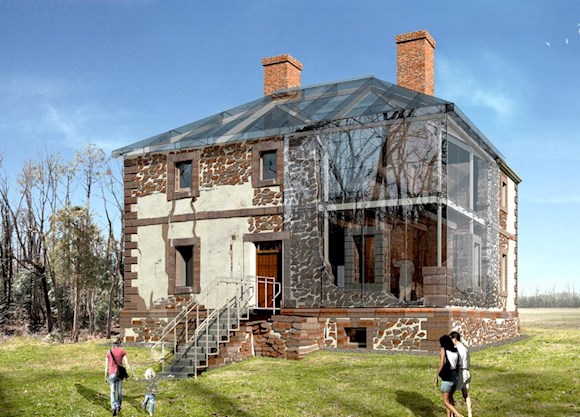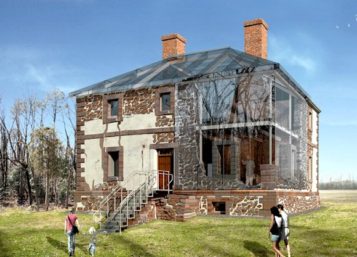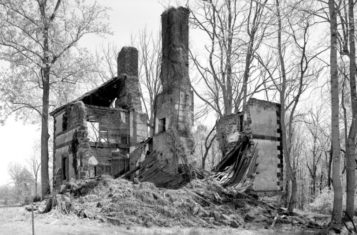
With the Menokin Glass House project, the Skanska team is taking a unique approach to preserving the ruins of the house of Francis Lightfoot Lee, one of the seven signers of the Declaration of Independence from Virginia. The Menokin house was built in 1769 and was designated as a historical landmark in 1971 for its significance. It sits on a 500-acre property along the shoreline of the Chesapeake Gateway.
As the owner’s project manager, the team is overseeing the conservation and repair of the historic manor house in Warsaw, Virginia. Rather than a traditional rebuild, however, the project includes preserving and stabilizing the existing ruins and building an enclosure of structural glass, which will protect the remains and allow visitors to enter and explore the site.
The Menokin Foundation is embarking on a revolutionary re-imagining of this historic structure. Led by the architecture firm of Machado Silvetti, the Menokin Foundation hopes to transform this house and classroom into an educational and environmental experience like no other.
“Through the project’s innovative glass enclosure, the Menokin manor house ruins will in effect be a full-size artifact that invites everyone to inspect, touch and experience 18th-century construction techniques and methods,” said Senior Project Manager James Ingle. “It will merge art and architecture.”
The house’s historical significance presents the project’s most difficult challenge, but also makes the project very rewarding. The team is working closely alongside archaeologists, a structural engineering firm and the architect to ensure the delicate ruins are preserved. In order to work safely, they have installed mesh netting overhead to make sure any pieces that could potentially come lose are caught. They have also mocked up a corner of the house to test building stabilization techniques prior to beginning work.
“This is one of the first times this method of preservation is being used, and I believe it will be replicated in the future because it is an incredibly sustainable solution,” Ingle explained. Only 20 percent of the home remains standing, and this project will mimic the missing volume and manor house profile.
Source: skanska.com.
Restoration photo courtesy of Menokin Foundation.




 Join our thriving community of 70,000+ superintendents and trade professionals on LinkedIn!
Join our thriving community of 70,000+ superintendents and trade professionals on LinkedIn! Search our job board for your next opportunity, or post an opening within your company.
Search our job board for your next opportunity, or post an opening within your company. Subscribe to our monthly
Construction Superintendent eNewsletter and stay current.
Subscribe to our monthly
Construction Superintendent eNewsletter and stay current.